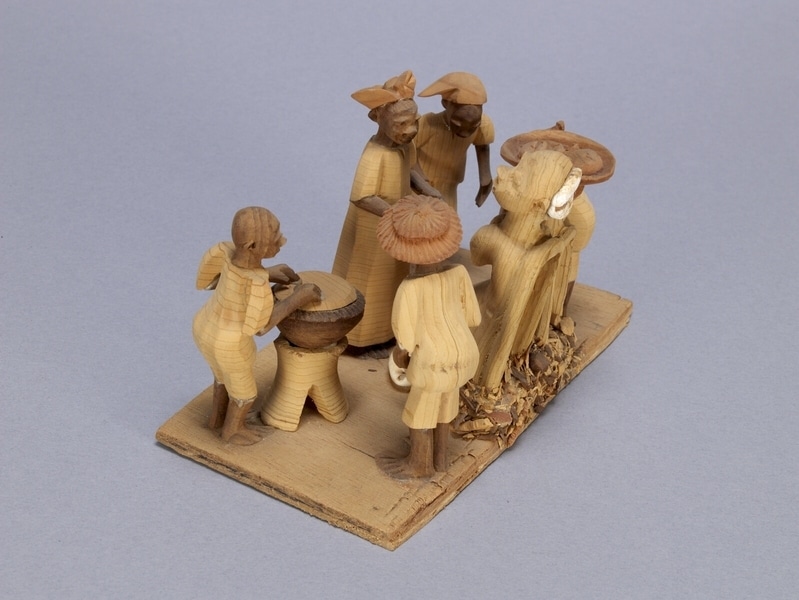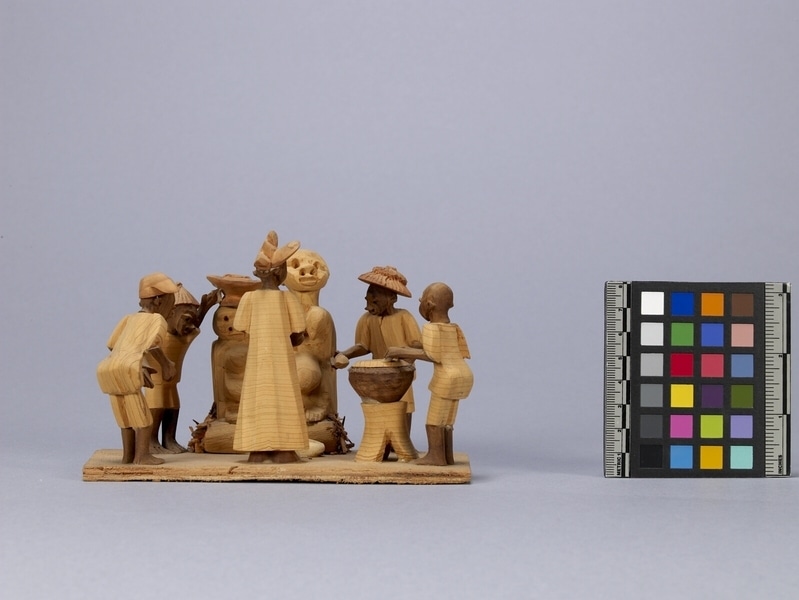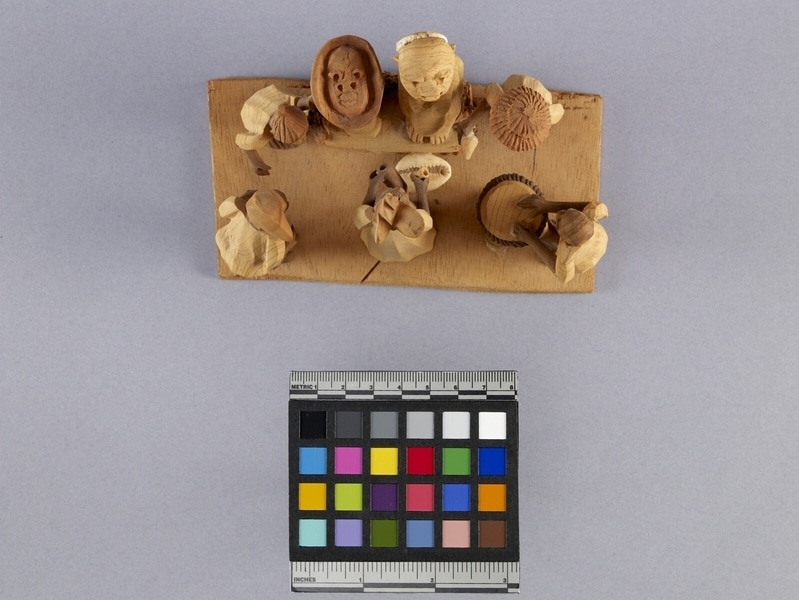Thorn Carving Item Number: Af353 from the MOA: University of British Columbia



Description
Five figures representing people around a shrine. Four males and one female are before a two figure shrine on a dais. One figure has his hands on a drum, one is touching the shrine, two are holding objects, and one is simply standing. Cowrie shell in front of shrine. Male figures are wearing short-sleeved shirts over shorts while female is wearing a full-length gown. There are four styles of hats represented while one figure is bareheaded. One figure on the shrine has a cowrie shell on the back of his head while the other has a calabash containing an ancestral face on its head. Heads, arms, legs, and pot are dark brown. The shirts, shorts, and gowns are light yellow-brown. The figures, drum stand, dais, and cowrie shell are all glued to a light brown base. Four hats and the calabash are light red-brown.
History Of Use
Thorn carvings are miniatures depicting scenes from Nigerian life. This type of carving began circa 1930. Thorns vary in size. They can be as large as 12.7 cm. long and 9.6 cm. wide. They are comparatively soft and easily carved. The light yellow-brown thorn and the dark brown thorn come from the Ata tree; the light red-brown thorn comes from Egun trees. The parts are glued together with viscous paste made from rice cooked with water. They are carved by men.
Narrative
Represents a religious ceremony (collector's notes).
Cultural Context
craft; tourist art
Item History
- Made by Ukini (Maker) in Nigeria before 1972
- Collected during 1972
- Owned by Andrew Stewart and Jessie Stewart before February 8, 1980
- Received from Andrew Stewart (Donor) and Jessie Stewart (Donor) on February 8, 1980
What
- Name
- Thorn Carving
- Identification Number
- Af353
- Type of Item
- carving
- Material
- egun thorn, wood, rice adhesive, atum thorn and cowrie shell
- Manufacturing Technique
- carved and glued
- Overall
- height 9.5 cm, width 16.7 cm, depth 8.6 cm
Who
- Culture
- Yoruba
- Creator
- Ukini (Maker)
- Previous Owner
- Andrew Stewart and Jessie Stewart
- Received from
- Andrew Stewart (Donor) and Jessie Stewart (Donor)
Where
- Holding Institution
- MOA: University of British Columbia
- Made in
- Nigeria
When
- Creation Date
- before 1972
- Collection Date
- during 1972
- Ownership Date
- before February 8, 1980
- Acquisition Date
- on February 8, 1980
Other
- Item Classes
- carvings & sculpture
- Condition
- good
- Accession Number
- 0590/0039